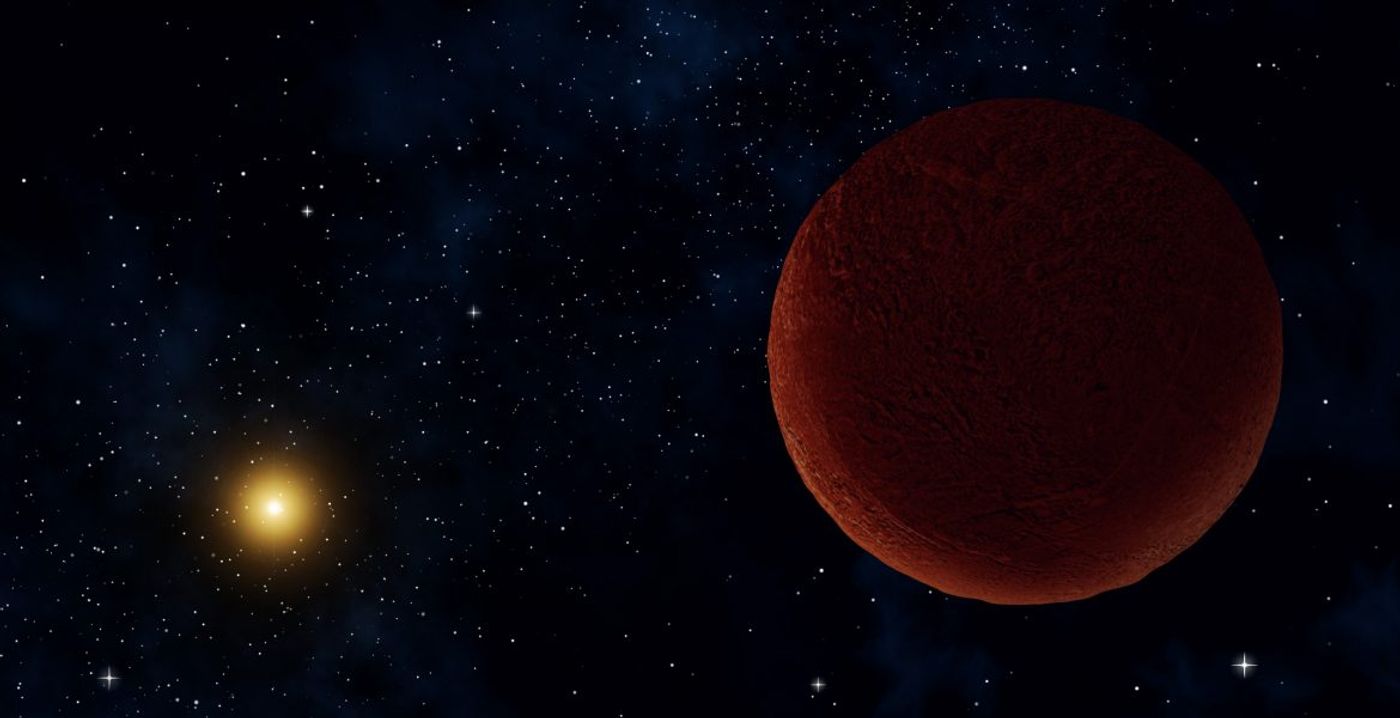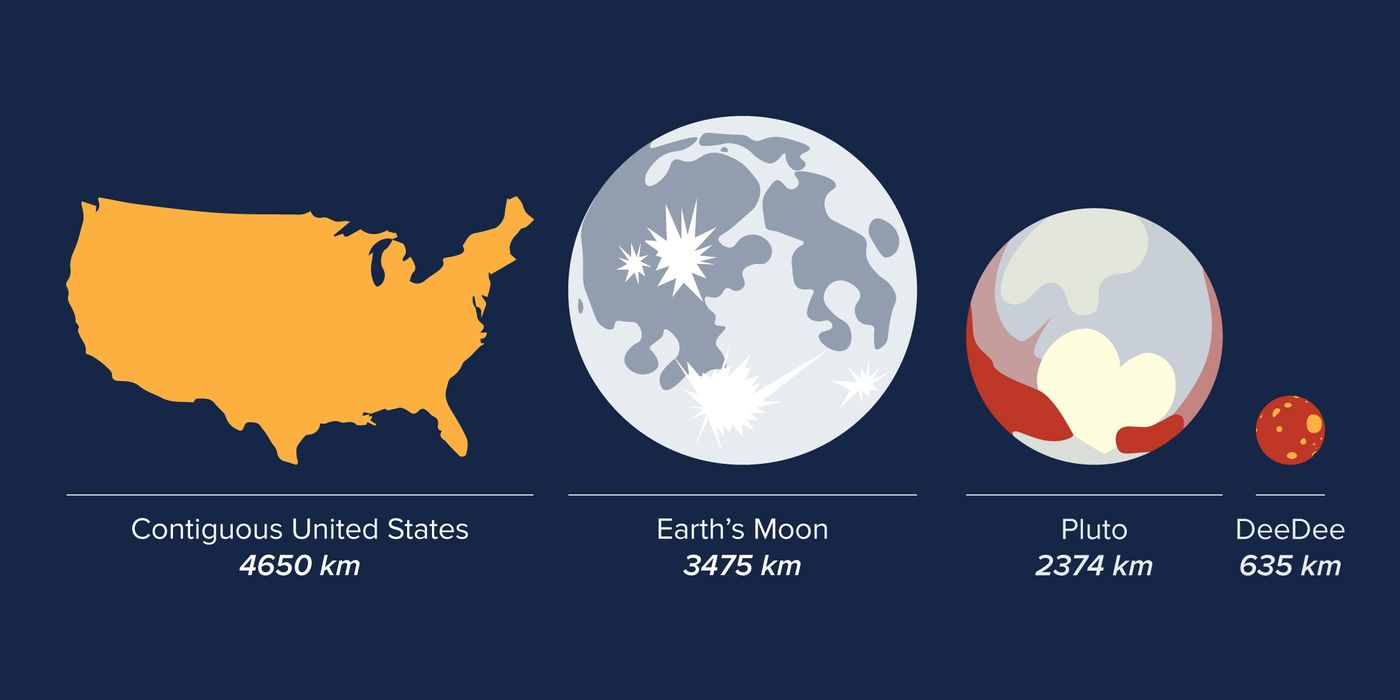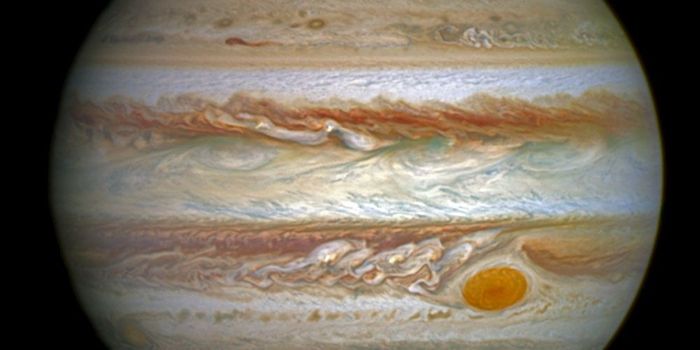Astronomers Use ALMA to Study Planetary Body Known as DeeDee
There’s renewed interest in a distant planetary body residing in our own Solar System called DeeDee (short for ‘Distant Dwarf’), which was originally discovered back in 2014.
Image Credit: Alexandra Angelich (NRAO/AUI/NSF)
DeeDee is approximately three times further away from the Sun than Pluto is – around 92 astronomical units away – and is estimated to be almost 3.75 times smaller than Pluto.
We still know very little about DeeDee, but we do know that it’s the second-furthest trans-Neptunian object (TNO) we know of and that there may be tens of thousands of planetary bodies similar to DeeDee out there.
Image Credit: Alexandra Angelich (NRAO/AUI/NSF)
To learn more about DeeDee, astronomers utilized the Atacama Large Millimeter/submillimeter Array (ALMA). Those details are now surfacing in a study published in the Astrophysical Journal Letters, which reveals more about the mysterious world.
Related: ALMA Observes the Sun in a new light
The new observations have officially put some numbers on the table, allowing astronomers to estimate that DeeDee is around 635 kilometers across and learning that it takes about 1,100 years for it to make a full orbit around the Sun. Moreover, it would take light 13 hours to travel the great distance from DeeDee to Earth.
Image Credit: Alexandra Angelich (NRAO/AUI/NSF)
Speaking of light, DeeDee isn’t too reflective, which might explain why it’s so dim in our current observations. Using millimeter-wavelength light, scientists calculated that DeeDee reflects around 13% of the Sunlight that strikes it, which means it would appear as dim as a candle if it were halfway between the Earth and the Moon.
Interestingly, DeeDee might have enough mass to be spherical in shape, which means it could possibly be dubbed a dwarf planet. Nevertheless, we don’t have enough data just yet to categorize it as such because it’s so far away that we can’t really get any clear photographs of it.
Related: Possible new planetary rules could categorize Pluto as a planet once more
“Far beyond Pluto is a region surprisingly rich with planetary bodies. Some are quite small but others have sizes to rival Pluto, and could possibly be much larger,” said study lead author David Gerdes from the University of Michigan.
“Because these objects are so distant and dim, it’s incredibly difficult to even detect them, let alone study them in any detail. ALMA, however, has unique capabilities that enabled us to learn exciting details about these distant worlds.”
Being so far away from the Sun also comes with other implications, such as the fact that it’s cold there… really cold. Gerdes and his team suggest that it’s approximately 30 degrees Kelvin there, which is “just a little above absolute zero.”
DeeDee went a long time without ever being noticed, but now that we've seen it, it serves as proof that there’s way more out there than meets the eye. Unfortunately, as you get so far out into the Solar System, sunlight becomes somewhat scarce and makes finding these objects more difficult.
Using these ALMA techniques could one day be the key to finding the hypothetical ‘Planet Nine’ that has been eluding scientists for so long.











